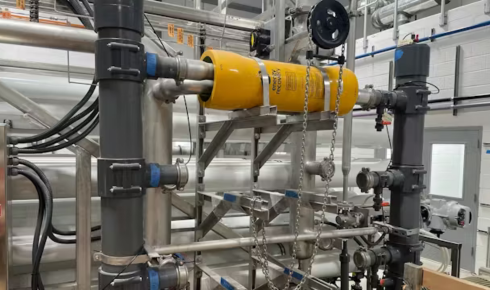If you’ve ever lived in The Villages, FL, you know water here has a personality of its own. It’s not unsafe, per se, but there’s something about the taste and feel that makes you pause. Hard water spots on dishes, faint mineral taste in coffee, and the occasional cloudy ice cube are all subtle reminders that your tap water might not be as pure as you’d like.
That’s exactly what led me down the rabbit hole of reverse osmosis systems the villages fl. At first, I wasn’t even sure what reverse osmosis meant—was it a fancy filter, some techy gimmick, or genuinely worth the investment? A few weeks of research, conversations with neighbors, and a handful of professional consultations later, and I realized just how transformative a good system can be for daily life.
Understanding the Problem
Florida’s water is primarily sourced from groundwater and surface water, often passing through limestone-rich aquifers. That’s great for volume and availability, but it also means minerals like calcium and magnesium end up in our taps. These minerals cause hard water, which can affect everything from your morning coffee to your water heater’s lifespan.
The issue isn’t always immediately obvious. A glass of water may look fine, but subtle taste differences, mineral buildup in appliances, or scale on faucets gradually become annoying. That’s why many homeowners start thinking seriously about water treatment. For many, this is where reverse osmosis the villages comes into play—a system that goes beyond traditional filtration to give truly clean, great-tasting water.
What Is Reverse Osmosis?
Reverse osmosis, or RO, is a filtration method that pushes water through a semi-permeable membrane, removing dissolved solids, sediments, chlorine, and other impurities. Essentially, it strips out everything that can impact taste, odor, and safety.
At first glance, it sounds almost like overkill, but the results speak for themselves. I remember filling a glass right after installation and noticing immediately that coffee brewed with this water tasted noticeably cleaner and brighter. Ice cubes were no longer cloudy, and even my vegetables tasted fresher when washed in RO water. It’s one of those subtle improvements that becomes part of your daily comfort without feeling flashy or over-engineered.
Benefits Beyond Taste
Many people assume reverse osmosis is just about making water taste better. While taste is a huge factor, RO systems provide other practical benefits:
- Cleaner Appliances: Less scale means longer-lasting coffee makers, dishwashers, and water heaters.
- Health Considerations: RO reduces certain contaminants, which is particularly reassuring for families with young children or individuals sensitive to minerals or chlorine.
- Laundry & Skin: Softer water from reduced minerals can make a noticeable difference in washing clothes and bathing.
For me, the most unexpected benefit was the peace of mind. Knowing that every glass of water I poured was filtered down to a highly pure level created a kind of quiet confidence that you don’t notice until it’s missing.
Choosing the Right System in The Villages
Here’s where things can get confusing. Reverse osmosis systems come in a variety of sizes and configurations, from small under-sink units to whole-home solutions. Choosing the right one requires a bit of homework:
- Test Your Water: Identify hardness, sediment levels, and any specific contaminants.
- Assess Household Needs: How much water do you use daily? Is it for drinking, cooking, or the entire home?
- Consider Maintenance: Filters need periodic replacement, and membranes require inspection.
- Seek Local Expertise: Professionals familiar with reverse osmosis the villages fl can recommend setups tailored to neighborhood water profiles.
In my case, a professional evaluation was worth every penny. The technician explained local mineral content, seasonal fluctuations, and the best system for a typical four-person household. That guidance saved me a lot of guesswork and frustration.
Installation Insights
Many homeowners worry that installation is complicated. While whole-home RO systems are more involved, most under-sink units are surprisingly straightforward for professional installation. I watched a technician set up my system in under two hours, and they walked me through every component, from filter replacements to water storage tanks.
One small tip: location matters. Installing under the sink near the kitchen faucet works for drinking and cooking water, while a larger unit closer to the main line can serve the entire home but may require a bigger upfront investment. Planning ahead is crucial to ensure you get the best results without unnecessary expenses.
Maintenance and Longevity
Like any home system, reverse osmosis requires upkeep. Filters and membranes don’t last forever, and neglecting maintenance can reduce effectiveness or even introduce new contaminants.
For typical households in The Villages, here’s what I found works best:
- Filter Changes: Every 6–12 months, depending on usage and water quality.
- Membrane Replacement: Usually every 2–3 years, though some high-quality units last longer.
- Periodic Sanitization: Cleaning the system and storage tank annually keeps everything fresh.
It might sound tedious, but once I set up reminders, it became just another routine chore. The benefits of clean water outweigh the minor maintenance steps.
Cost Considerations
RO systems range from a few hundred dollars for compact under-sink units to several thousand for whole-home setups. While the initial investment might seem high, consider the long-term savings: fewer appliance repairs, less soap and detergent use, and healthier water for cooking and drinking.
I often tell friends that the real ROI is not just financial—it’s quality of life. No more cloudy ice, no more weird mineral taste in tea, and the quiet reassurance that the water is consistently clean.
Lifestyle Benefits
Once installed, the lifestyle improvements become surprisingly tangible. Coffee tastes better, vegetables rinse cleaner, and glassware shines without extra effort. Even small daily tasks, like filling a water bottle or making pasta, feel a little more pleasant.
I recall hosting a small family brunch after installation. Everyone commented on how crisp and clean the water tasted. It was one of those tiny, subtle upgrades that doesn’t shout for attention but changes daily life for the better.

